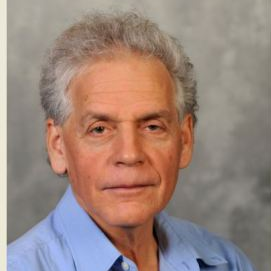Selected Papers from the 2nd International Online Conference on Crystals
A special issue of Crystals (ISSN 2073-4352).
Deadline for manuscript submissions: closed (30 September 2021) | Viewed by 27544
Special Issue Editors
Interests: nanoparticles synthesis; solid state chemistry; characterization of nanoparticles
Special Issues, Collections and Topics in MDPI journals
Interests: Enzyme kinetics, catalytic mechanisms, protein structure, cholinesterase structure/activity, acetylcholinesterase, butyrylcholinesterase, cholinesterase inhibition, cholinesterase reactivation, antidotes against organophosphate intoxication, structure-based antidote design
Interests: Ab-initio structure determination by powder diffraction data; computational crystallography; qualitative phase analysis; quantitative phase analysis; Rietveld refinement; structure determination and refinement by single crystal diffraction data; data collection and processing
Interests: transmission electron microscopy; scanning transmission electron microscopy; electron energy-loss spectroscopy; correlated oxides; molecular beam epitaxy; electron beam diffraction; magnetism
Special Issues, Collections and Topics in MDPI journals
Interests: protein crystallography; phasing methods; modulated enhanced diffraction; multivariate analysis
Special Issues, Collections and Topics in MDPI journals
Interests: protein crystallography; small and wide angle X-ray scattering (SAXS and WAXS); BioSAXS; biological molecules; rare diseases; phasing algorithm; nano- and bio-materials; X-ray imaging
Special Issues, Collections and Topics in MDPI journals
Special Issue Information
Dear Colleagues,
This Special Issue comprises selected papers from the Proceedings of the 2nd International Online Conference on Crystals (Crystals 2020), 10–20 November, 2020, held on sciforum.net, an online platform for hosting scholarly e-conferences and discussion groups.
After the 1st Electronic Conference on Crystals, held in 2018, which offered the opportunity for researchers engaged in the study of crystalline materials to present their research and exchange ideas with their colleagues by taking full advantage of the Internet, removing the need to travel and participation expenses, we found it appropriate to renew the experience to gather contributions from more significant advances made in the last two years. These stems from advances in experimental (both diffractometric and spectroscopic) and computational techniques for research in many different areas, from pharmaceutical, to materials and biomolecular science. The second conference will be organized around the following topics and related themes.
- Liquid Crystals
- Crystalline Materials
- Crystal Engineering
- Biomolecular Crystals
- Crystalline Minerals and Biominerals
- Phase Transformations in Crystalline Materials
- Small and Wide Angle X-ray Scattering Applied to Nano- and Biomaterials
- Software/Tools to Deal with Crystal and Crystallographic Issues & Teaching Crystallography
- Structure of Cholinesterases
Selected papers that attract the most interest on the web or that provide a particularly innovative contribution will be selected for publication. These papers will be subjected to peer review and published with the aim of rapid and wide dissemination of research results, developments, and applications. We hope this Conference Series will continue to grow in acceptance and recognition by potential participants, contributors, experts who want to disseminate their latest findings, and readers who seek for information on relevant water science topics.
Prof. Dr. Reshef Tenne
Prof. Zoran Radić
Dr. Anna Moliterni
Prof. Dr. Robert Klie
Dr. Rocco Caliandro
Dr. Dritan Siliqi
Guest Editors
Manuscript Submission Information
Manuscripts should be submitted online at www.mdpi.com by registering and logging in to this website. Once you are registered, click here to go to the submission form. Manuscripts can be submitted until the deadline. All submissions that pass pre-check are peer-reviewed. Accepted papers will be published continuously in the journal (as soon as accepted) and will be listed together on the special issue website. Research articles, review articles as well as short communications are invited. For planned papers, a title and short abstract (about 100 words) can be sent to the Editorial Office for announcement on this website.
Submitted manuscripts should not have been published previously, nor be under consideration for publication elsewhere (except conference proceedings papers). All manuscripts are thoroughly refereed through a single-blind peer-review process. A guide for authors and other relevant information for submission of manuscripts is available on the Instructions for Authors page. Crystals is an international peer-reviewed open access monthly journal published by MDPI.
Please visit the Instructions for Authors page before submitting a manuscript. The Article Processing Charge (APC) for publication in this open access journal is 2600 CHF (Swiss Francs). Submitted papers should be well formatted and use good English. Authors may use MDPI's English editing service prior to publication or during author revisions.










